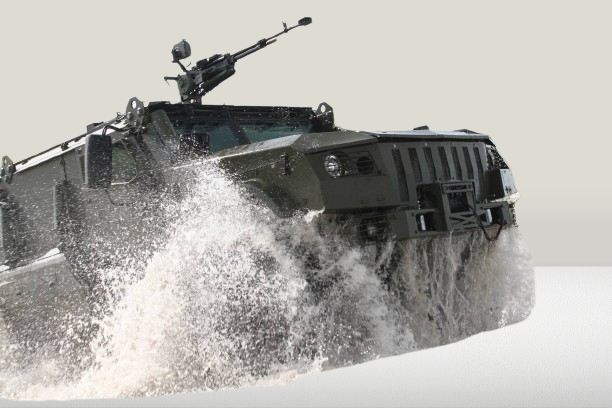Defence & Security

Entering the defense industry in India requires careful planning and consideration due to its unique challenges and regulatory environment. Here is a comprehensive market entry strategy for defense projects in India
To enter India’s defense sector effectively:
1. Conduct thorough market research, understanding trends and regulations.
2. Ensure compliance with Indian defense laws and export controls.
3. Forge partnerships with local firms for navigating regulations and networks.
4. Cultivate strong government relations and engage in lobbying efforts.
5. Assess your company’s capabilities against project requirements.
6. Invest in R&D aligned with defense project needs.
7. Obtain necessary certifications and prioritize quality standards.
8. Develop a robust risk management strategy and contingency plans.
9. Adopt a long-term perspective, anticipating procurement cycles.
10. Position your brand as a reliable and innovative defense partner.
Entering the defense industry in India requires careful planning and consideration due to its unique challenges and regulatory environment. Here is a comprehensive market entry strategy for defense projects in India
To enter India’s defense sector effectively:
1. Conduct thorough market research, understanding trends and regulations.
2. Ensure compliance with Indian defense laws and export controls.
3. Assess your company’s capabilities against project requirements.
4. Identify partnerships with local firms for navigating regulations and networks.
5. Cultivate strong government relationships and network.
6. Develop a robust risk management strategy and contingency plan.
7. Highlight long-term perspective, anticipating procurement cycles.
8. Position your brand as a reliable solution.
Creating and estimating demand for defense products involves a strategic approach that considers various factors such as geopolitical situations, national security needs, technological advancements, and budget allocations. Here’s a guide on demand creation and estimation for defense products:
1. Conduct comprehensive market research to understand defense needs and geopolitical trends.
2. Engage stakeholders like defense ministries to grasp specific requirements.
3. Align product development with identified defense needs and regulations.
4. Showcase technology through exhibitions and collaborations.
5. Develop strong government relations to stay informed about budgets and policies.
6. Educate about product capabilities through initiatives and publications.
7. Utilize data analysis for accurate demand forecasting and competitive analysis.
8. Advocate for budget allocations and offer customizable solutions.
9. Focus on long-term relationships and risk mitigation strategies.
10. Stay updated with emerging technologies and maintain a feedback loop for continuous improvement.
Under the “Make in India” initiative, which aims to promote manufacturing and production within the country, developing a robust production/manufacturing strategy and establishing a strategic supply chain are crucial. Here’s a guide to creating an effective strategy:
1. Select products in line with government priorities and market demand.
2. Adopt advanced manufacturing tech and Industry 4.0 practices.
3. Ensure compliance with regulations and streamline approvals.
4. Optimize costs while maintaining quality through efficient processes.
5. Establish stringent quality control measures like Six Sigma.
6. Integrate manufacturing with the broader supply chain for efficiency.
7. Design processes for flexibility and scalability to meet demand changes.
8. Implement sustainable practices and collaborate with research institutions.
9. Utilize real-time data analytics to optimize production schedules.
10. Regularly reassess and adapt strategies to remain competitive and contribute to economic growth.
As an Export Channel Partner to Armoured Vehicles Nigam Limited and Munitions India Ltd, Torque Defence Solutions facilitates the export of armored vehicles, subject to rigorous regulations and oversight:
1. Regulatory Compliance: Adherence to both national and international arms export laws and regulations is paramount.
2. End-User Certification: Transparency via certification ensures vehicles reach legitimate destinations.
3. Security and Transportation: Secure logistics prevent theft or diversion during transit of these high-value assets.
4. Customization and Training: Tailoring vehicles to user needs and providing operational training is essential.
5. Export Documentation: Legal and transparent export requires comprehensive documentation and licenses.
6. End-Use Monitoring: Thorough due diligence on buyers ensures vehicles won’t be misused or contribute to conflicts.
7. International Sanctions Compliance: Transactions must comply with international sanctions to avoid violations.
8. Risk Assessment: Identifying and mitigating risks, including reputational ones, is part of the process.
9. Post-Sale Support: Maintenance, spare parts, and technical assistance ensure long-term functionality.
Exporting munitions involves the sale or transfer of military-grade weapons, ammunition, and related equipment to foreign governments, military forces, law enforcement agencies, or authorized entities. The export of munitions is subject to strict regulations and oversight by government agencies to prevent their misuse and proliferation. Here are some key considerations:
1. Regulatory Compliance: Adhering to national and international arms export laws is crucial.
2. Export Licensing: Obtaining licenses specifying types, quantities, and destinations is necessary.
3. End-User Certification: Certificates confirm intended use, preventing unauthorized diversion.
4. End-Use Monitoring: Due diligence ensures legitimate use.
5. International Treaty Compliance: Transactions must align with treaties like the Arms Trade Treaty and avoid sanctions violations.
6. Security and Transportation: Secure logistics prevent theft, diversion, or tampering during transit.
7. Documentation: Accurate records, including contracts and certificates, are essential for transparent transactions.
8. Customization and Training: Tailoring and training cater to specific end-user requirements.
9. Post-Sale Support: Maintenance and technical assistance uphold munitions’ reliability and effectiveness.
10. Risk Assessment: Thorough risk assessment mitigates legal, financial, reputational, and security risks.
